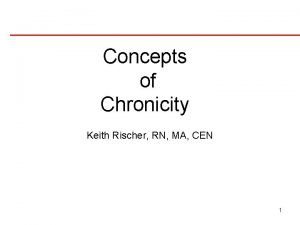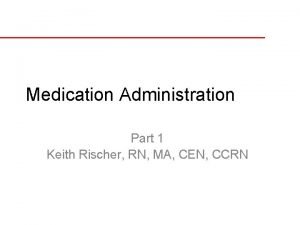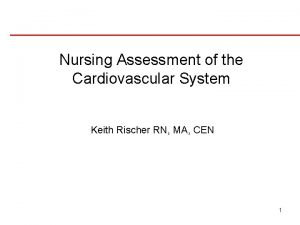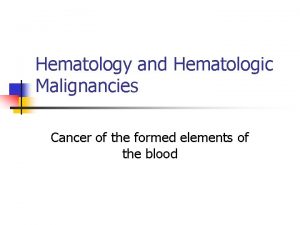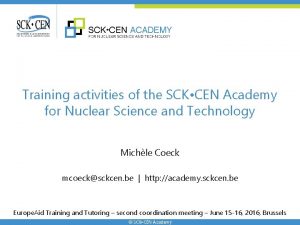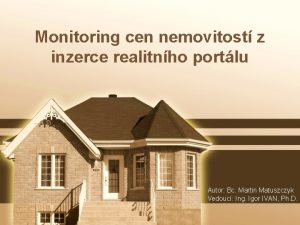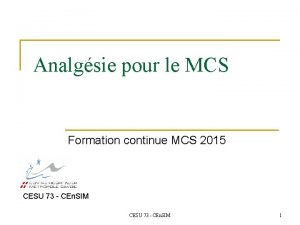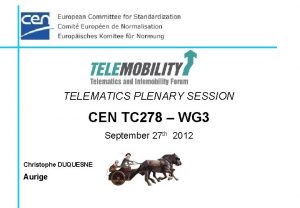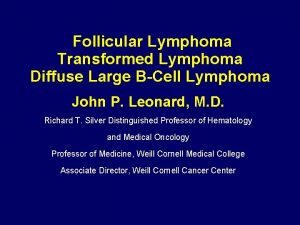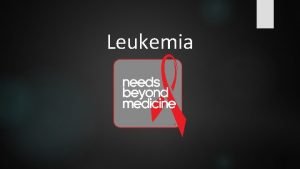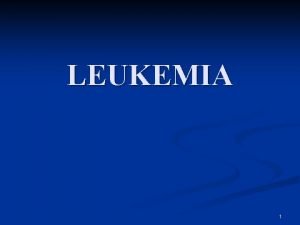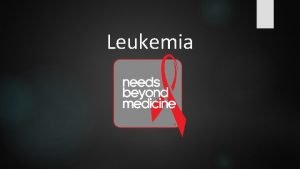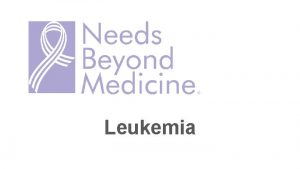Leukemia Lymphoma Keith Rischer RN MA CEN Leukemia














- Slides: 14

Leukemia & Lymphoma Keith Rischer, RN, MA, CEN

Leukemia Patho • Loss of regulation in cell division, causes proliferation of malignant leukocytes Classification based on predominant cell of origin • Lymphoid • Myeloid Acute or Chronic Lymphocytic leukemia Acute lymphocytic leukemia (ALL)most common w/peds • 5 yr survival 80% peds/40% w/adults Chronic lymphocytic leukemia (CLL)-most common w/adults • 73% survival rate Myelogenous leukemia Acute myelogenous leukemia (AML) 20% survival rate Chronic myelogenous leukemia (CML)

Leukemia: Etiology • • • Chromosomal changes Chemical Agents-Benzene Chemotherapy-Alkylating Agents Viruses-Retroviruses Radiation Unknown factors

Leukemia Sx. Clinical Manifestations – – – – Anemia Fatigue and weakness Bleeding Fever and Infections Weight loss-joint pain Mouth sores Hepatosplenomegaly & Lymphadenopathy Diagnosis

General Treatment of Leukemia Chemotherapy • Induction therapy- attempts to induce or bring about remission. • Consolidation therapy - after remission achieved -eliminate remaining cells • Maintenance therapy- treatment with lower doses of same drugs every 3 -4 weeks • Combination therapy • Stem cell transplant • Bone marrow transplant

Nursing Management Acute Many emotional-psychosocial needs/support – Communicate tx plan-expected course – Protective Isolation/Neutropenic Precautions – Educate!! – Chemo-manage side effects – Spiritual care

Neutropenia • Severe decrease in neutrophils-secondary to chemo or immunosuppressive therapy • Sx: decreased immune/inflammatory responsemasks infection…low grade fever significant >100. 4 • Nursing Management: – – Neutropenic precautions obtain pan cultures start IV abx assess for septic shock

Lymph System • Consists of: lymphatic capillaries, ducts, lymph nodes, lymph fluid • Function: – Returns excess interstitial fluid to the blood – Absorbs fatty acids – Produces immune cells – Lymph nodes: Filtration of bacteria and foreign particles carried by lymph fluid.

Lymphoma – Hodgkin’s Patho Incidence Clinical Manifestations – – – Enlargement of cervical, axillary or inguinal lymph nodes *Wt Loss, *Fever and chills, *Night sweats (these correlate with a worse prognosis, B sx’s) Fatigue and weakness Tachycardia Diagnosis

Lymphoma – Hodgkin’s Treatment: Based on stage of the disease – Radiation alone or with chemotherapy Objective: – least amt of tx to achieve cure yet minimize short-term & long-term complications Nursing Management – pain control – managing side effects – psychosocial support

Non-Hodgkin’s Lymphomas Patho Prevalence Categories – Low grade (indolent) – Intermediate grade (aggressive) – High grade (very aggressive) • Affects all ages Manifestations

Non-Hodgkin’s lymphomas Diagnosis Treatment – Radiation if just stage I – Chemotherapy involves multidose/multiagent regimen – Holistic nursing management-same as previous blood disorders…pain control, management of SE, psychosocial support, – Spiritual care-multidisciplinary team

Multiple Myeloma Patho • excess production of plasma cells w/resultant myeloma proteins destroys bone/bone marrow Incidence Clinical manifestations (develop slowly and insidiously) – Skeletal pain (esp pelvis, spine & ribs) *Major manifestation, presents first. – Osteolytic lesions; can see in skull, vertebrae & ribs – Hypercalcemia from bony degeneration – Anemia, thrombocytopenia, & granulocytopenia

Multiple Myeloma Diagnosis • Lab, x-rays, bone marrow • Urine has Bence Jones protein Collaborative management: – Radiation – Chemo Nursing Management – – – Ambulation & adequate hydration Ambulate w/care Pain control Infection control Emotional/spiritual support
